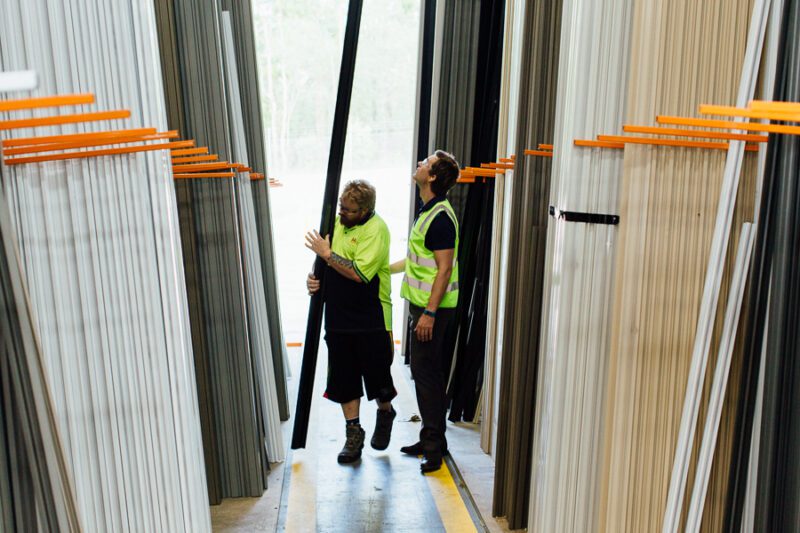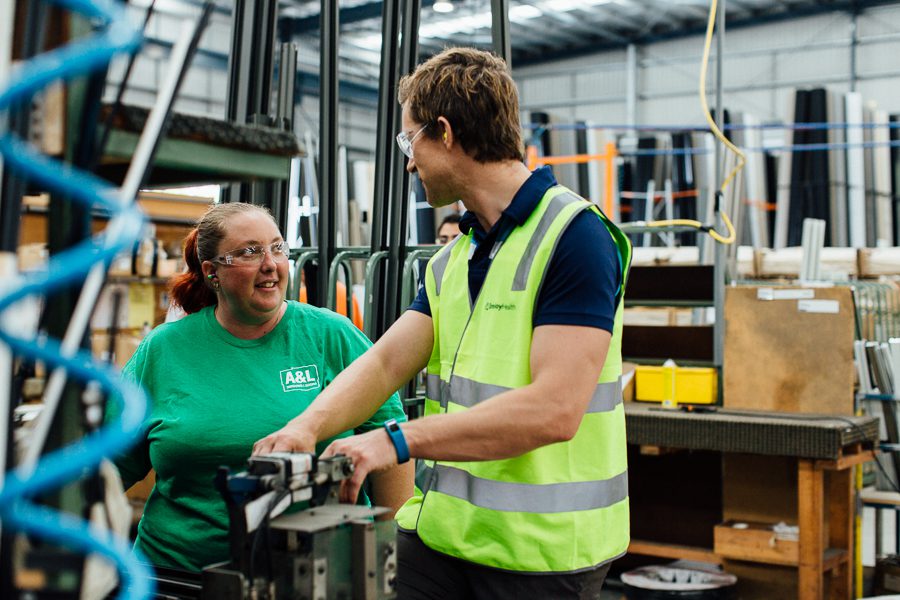Specifically, a study by the Journal of Occupational and Environmental Medicine demonstrated that early intervention improved return back to work rates within 6 months and return to work within 12 months. By providing injury rehabilitation within the setting of the workplace, businesses reap the benefits of not only improved return to work rates but so much more in the context of its health and safety culture.
Benefits Of Injury Rehabilitation For Employees
Health consultations during work hours
Having work time dedicated to health consults removes the barriers of having to schedule appointments outside of working hours, simplifying the rehabilitation process.
Workplace physiotherapist expertise
Physiotherapists who specifically operate in workplace health have knowledge around the different demands and physical requirements of jobs across different industries, which can often be difficult to explain to external providers.
Integrated workplace health and safety team
An onsite physiotherapist works with health and safety and relevant supervisors and managers. Allowing a workplace physiotherapist to assist with the injury rehabilitation phase allows for greater support with return to work at the right time.
Benefits Of Return To Work & Injury Management For Your Business

Increased return to work rates
Providing onsite injury rehabilitation allows workers to access treatment as well as reap the benefits of continuing social interactions with their colleagues at work. Early intervention = earlier chance for return to work.
Increased early intervention
Providing access to an onsite physiotherapist initially for injury management provides an opportunity for workers to feel support onsite and build trust. By fostering this culture, greater opportunities for early intervention can be provided which is where the greatest difference in health and safety can be made.
Litigation mitigation
Providing injury rehabilitation to workers by an onsite physiotherapist allows a business to fulfill its duties of providing support and modifications for an injured worker returning to work where reasonably practicable.
Our Injury Rehabilitation Process For Return To Work
This process varies across sites, however, here are some of the processes involved with injury rehabilitation.
Complete relevant job dictionary/job task analysis
By understanding the critical physical demands of the job required by the worker, this can then guide the relevant time-frame for return to work
Regular updates and liaising with all relevant parties
As a New Zealand registered clinician, the onsite physiotherapist will liaise with all relevant health practitioners and stakeholders involved with the worker for a handover to fulfill their due diligence of creating the best health outcomes for the worker.
Provide onsite physiotherapy and support suitable duties planning
Once the onsite physiotherapist has all available information, they will provide treatment and also recommendations around modifications to work to support the worker’s return to normal duties.
Our Injury Rehabilitation & Return To Work Programs
Great injury rehabilitation encompasses more than just hands-on treatment from an onsite physiotherapist. We pride ourselves on communicating closely with both onsite supervisors/managers and other health stakeholders to ensure the best level of care for workers. Key to our philosophy is always striving to not only be “reactive” by rehabilitating injuries, but always aiming to be “proactive” by empowering workers to continue strength and exercises long after their injury. Below are some common scenarios and how we may approach these:
Ankle Injury Rehabilitation
Initial treatment such as strapping, relevant imaging referral to rule out any sinister pathology, our physiotherapist will then provide graded exercises and strength programs to restore range of movement and function of the ankle. This will be done in conjunction with providing recommendations for modifying duties where relevant and liaising with supervisors/managers involved with regards to the expected timeframes.
WorkCover post-surgical rehabilitation
Our onsite physiotherapist will liaise closely with the rehabilitation consultant and managing specialist for a thorough handover of care. Once this is completed, we will facilitate the ongoing management of the worker in conjunction with the treating specialist and any other external physiotherapist that may be supporting the worker. We will also continue to support the worker after the end workcover claim with regards to physiotherapy rehabilitation if this is clinically indicated.
Knee ligament injury Rehabilitation
Depending on the severity of the injury, treatment initially may consist of modalities such as strapping, relevant imaging referral to rule out any sinister pathology, and recommendations for braces where required. The physiotherapist will introduce graded exercises with the aim of progressing to a full strength program. Recommendations around modifying duties and restrictions specific to a knee ligament injury will also be forwarded to relevant supervisors/managers and an expected timeframe for recovery.
Why Employ Health
Reliable service delivery
Employ Health prides itself on working together as a tribe and as a team; service delivery is never dependent on one single practitioner. This allows for consistent service-delivery and timely solutions to fulfil your requirements as required.
Integrated systems solution
Employ Health provides access to bespoke systems and software, simplifying large scale injury management lists to user friendly dashboard and report summaries.
Seasoned and experienced team
Employ Health has serviced injury management for many years, which allows for unique insights across various industries and individualised recommendations when dealing with complex cases. Employ Health is a time-tested team delivering timely advice.
Frequently Asked Questions
Injury rehabilitation is providing injured workers support in all domains of their work, the workplace overall and the worker themselves. This may include modifying work duties, arranging workplace supports or providing rehabilitation from healthcare professionals.
Majority of time spent in our lives is through our work. By integrating rehabilitation into our occupational workplace, this not only helps minimize disruptions to a workers usual routine, but also improves the likelihood of return to work through early intervention and early return to work.
Many musculoskeletal injuries can be supported through rehabilitation services. Growingly, psychological conditions are also being serviced to workers by appropriate health professionals.
